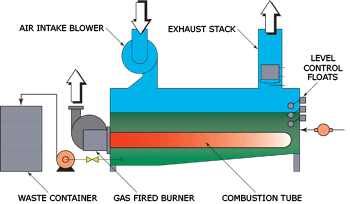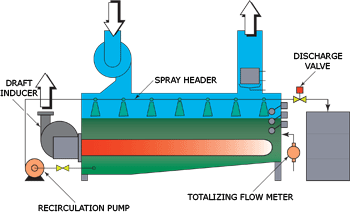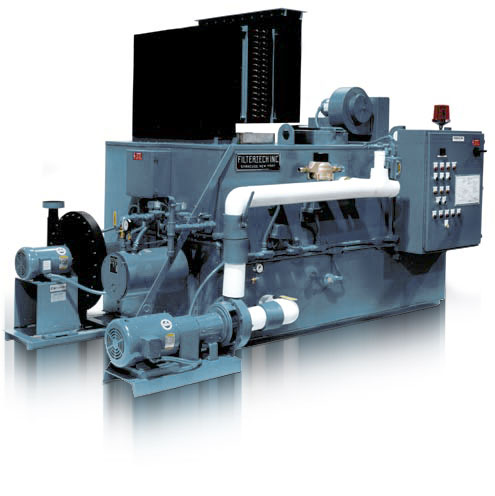TEB – Thermal Emulsion Breaker (Evaporators)
Home » Products » Evaporators » TEB – Thermal Emulsion Breaker (Evaporators)
The Thermal Emulsion Breaker Model TEB utilizes evaporation, the simplest and most efficient concept for concentrating aqueous wastes. The TEB is available in both the standard non-boil (IH) and boil (IHB) Models to meet your specific application requirements.
The TEB produces two components from the breaking process, highly concentrated oil and either water vapor or distilled water if a condenser option is incorporated. There is no need for further treatment because the water vapor is discharged safely to atmosphere or condensed for reuse or disposal.
Other processes such as chemical splitting are operator intensive and are not effective on all waste streams. Ultrafiltration is also used but is unable to achieve the extremely high oil concentrations of 90-95% possible with the TEB.
Mode of Operation
Spent solution is automatically fed into the TEB heating chamber by an optional feed pump. The TEB uses a gas-fired burner which creates a combustion flame that is directed down the removable serpentine combustion tube submerged in the spent solution. As the hot gases travel down the tube, the heat is transferred into the liquid and the cooled gases are exhausted to atmosphere.

Boil Unit
Once the solution reaches temperature it evaporates into the air volume above the liquid. To aid the evaporation process, a pump is used to circulate the hot solution from the bottom of the heating chamber to a series of spray headers located above the liquid (optional on Model IHB). These sprays also assist in foam suppression and the break up of any oil layer which may form on the surface of the liquid.
An air blower is used to enhance the removal of water vapor by moving dry air through the spray mist and exhausting the water vapor out the optional discharge stack. To prevent overspray from exiting the unit, mist eliminators and coalescing elements are incorporated in the discharge stack.

Non-Boil Unit
As the water phase is evaporated, the liquid level drops and is sensed by the level control floats. Additional liquid is then added to the heating chamber to maintain proper operating level. This fill/evaporation cycle continues for a preset period of time dependent upon the initial contaminant concentration.
At the end of the fill/evaporation cycle, the feed is shut off and the remaining liquid in the chamber is further concentrated.
Once cook-down is complete, an optional discharge pump is activated for concentrate removal to a drum or waste receptacle for disposal. The chamber is then automatically refilled and the process cycle repeated.
The heating chamber is provided with a sloped bottom and a large cleanout access hatch for easy removal of any accumulated solids.

